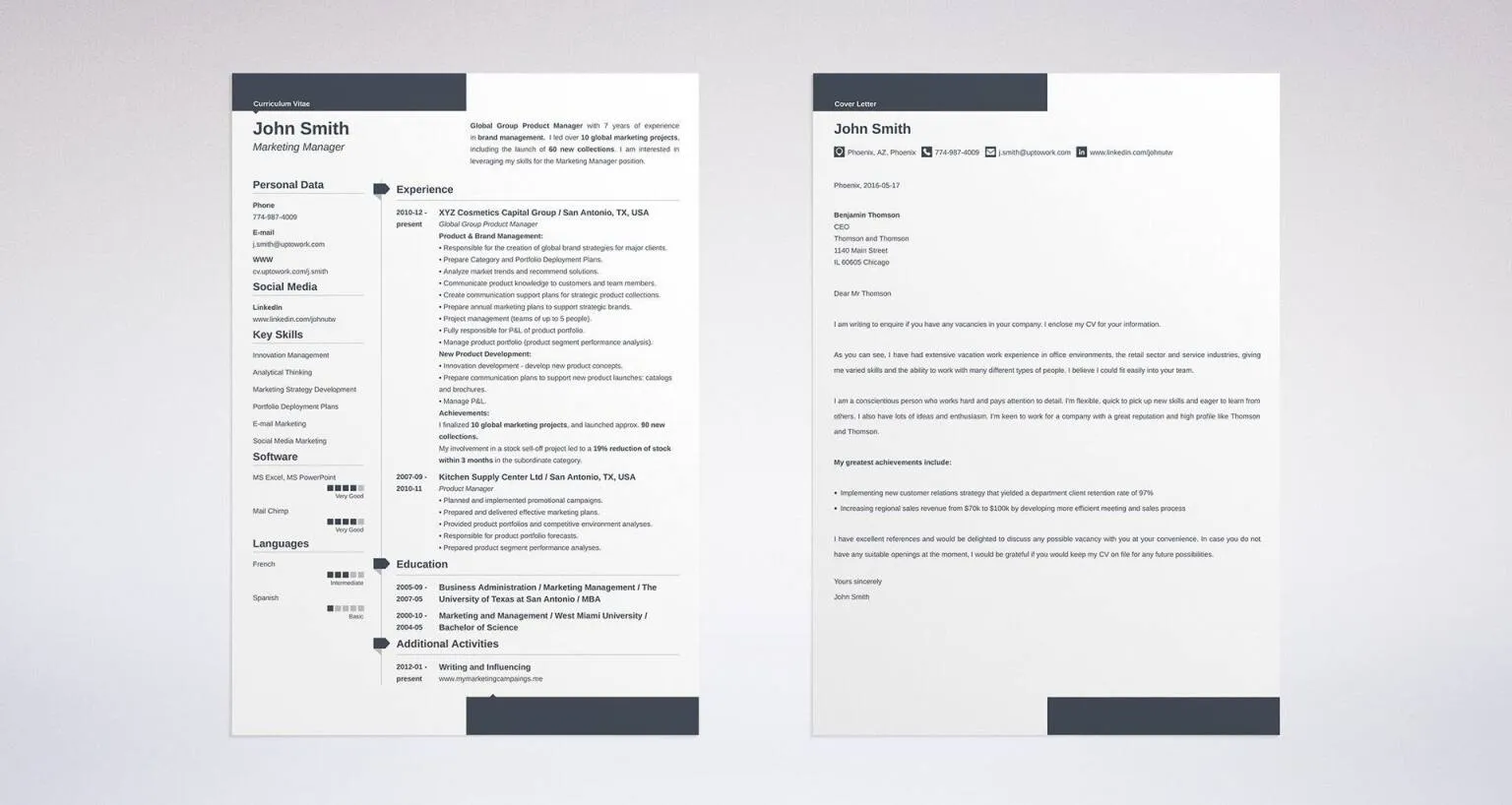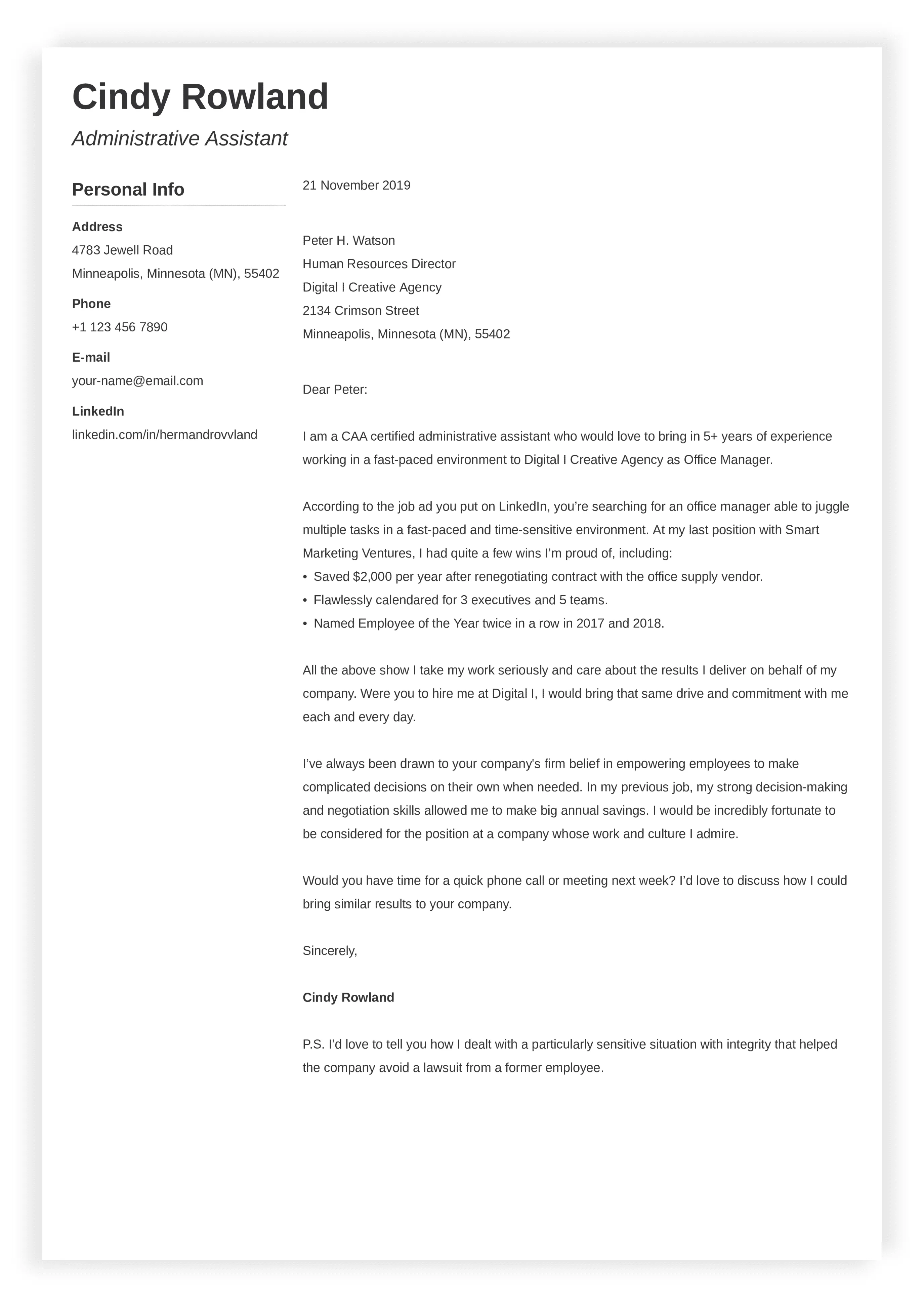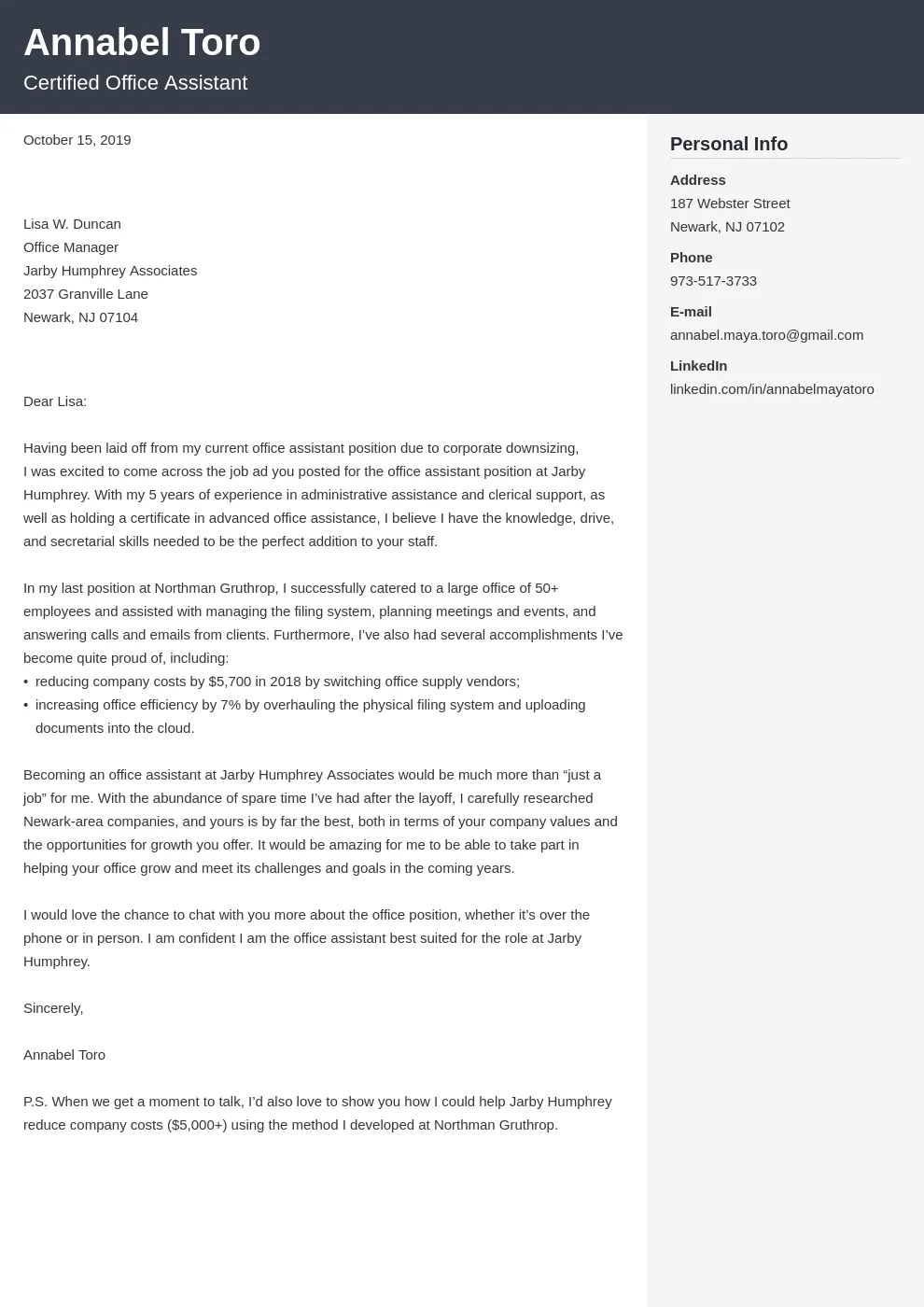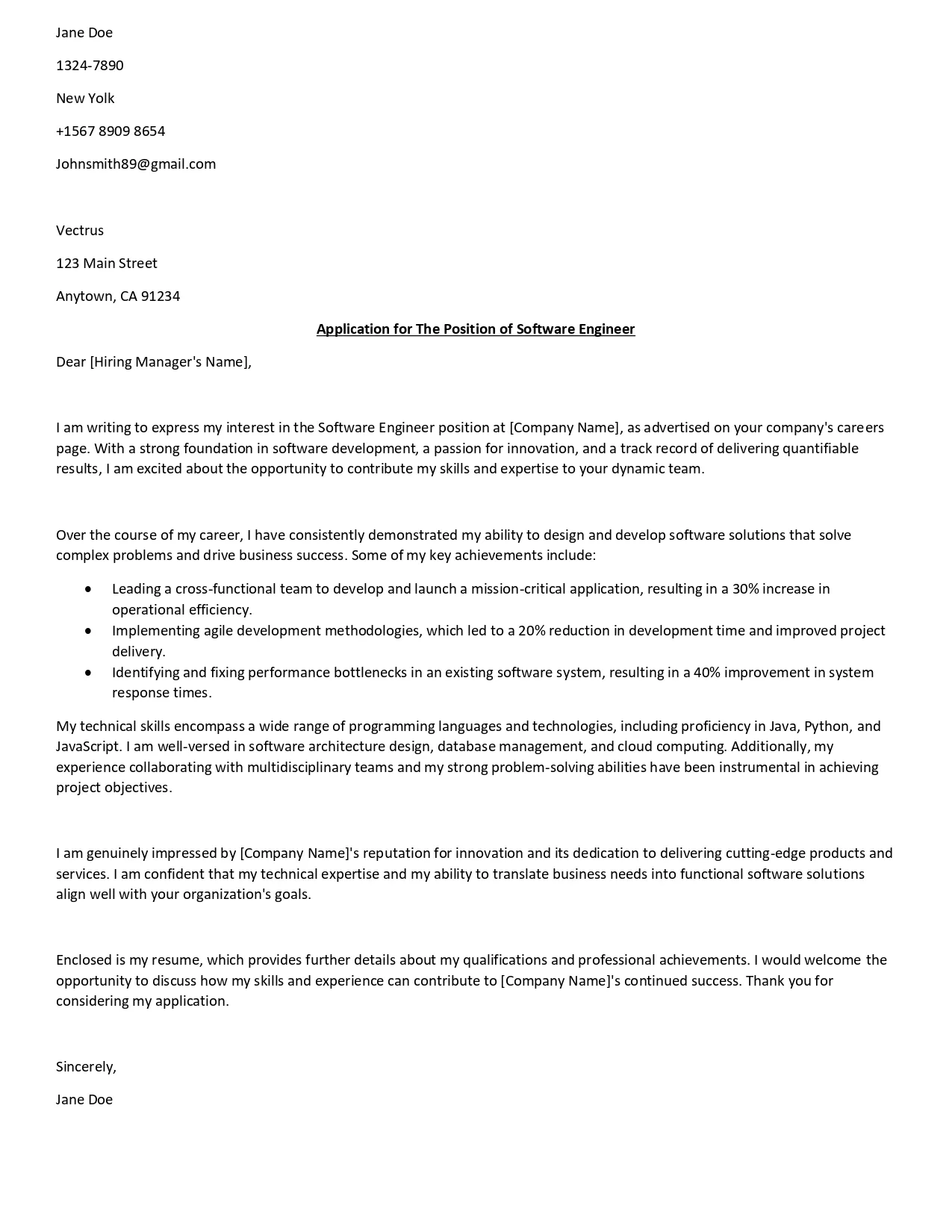Why Cover Letters Matter
In the competitive landscape of job applications, a well-crafted cover letter can be your secret weapon. It’s your chance to make a strong first impression and showcase your personality, skills, and enthusiasm for a specific role. Unlike a resume, which is a concise summary of your experience, a cover letter allows you to tell a story, connect with the employer, and explain why you’re the perfect fit for the job. It’s your opportunity to go beyond the bullet points and demonstrate your understanding of the company and the position you are applying for. Many hiring managers read cover letters, and a compelling one can significantly increase your chances of getting an interview. Neglecting this crucial document means you could be missing out on opportunities, so investing time in writing a great cover letter is an investment in your career.
Cover Letter Structure Essentials
A well-structured cover letter is easy to read and highlights the most important information. The standard format includes several key components that work together to create a cohesive and persuasive narrative. Begin with your heading and contact information, followed by a professional greeting. Then, you’ll have the opening paragraph, which should grab the reader’s attention and state the position you’re applying for. The body paragraphs are where you elaborate on your skills and experiences, demonstrating how they align with the job requirements. Make sure to tailor each section to the specific job and company. Finally, your closing should reiterate your interest, summarize your qualifications, and include a call to action, such as requesting an interview. By following this structure, you present your qualifications in a clear, organized way.
Heading and Contact Information

Start your cover letter with your full name, address, phone number, and email address. This information is crucial for the hiring manager to contact you if they are interested in your application. Include the date, and the name and address of the hiring manager or the company. If you don’t know the hiring manager’s name, research the company’s website or LinkedIn to find out. Addressing the cover letter to a specific person is always preferable. If you are unable to find a name, use a professional greeting such as “Dear Hiring Manager”. Make sure your contact information is accurate and up-to-date so employers can easily reach you. Ensure your email address is professional and appropriate for a job application.
Greeting and Opening Paragraph
Start your cover letter with a professional greeting, such as “Dear Mr. / Ms. [Last Name]” if you know the hiring manager’s name. If not, “Dear Hiring Manager” is acceptable. The opening paragraph is your chance to capture the reader’s attention and immediately convey your enthusiasm for the position. Clearly state the job you’re applying for and how you found the opportunity. Briefly mention something that excites you about the company or the role. Avoid generic introductions. Instead, aim to make a strong first impression by demonstrating your understanding of the job requirements and showcasing your interest. Keep this section concise, focusing on making the reader want to learn more about you and read the rest of your letter. This initial impression sets the tone for the rest of your application.
Body Paragraphs Highlighting Your Skills
The body of your cover letter should highlight your relevant skills and experiences. This section is the core of your cover letter and should demonstrate how your qualifications align with the job description. Use specific examples to illustrate your abilities and accomplishments. Focus on the skills that the employer values and show how you have applied them successfully in the past. Don’t just list skills; explain how you used them to achieve specific results. This is where you show the employer your value. Use keywords from the job description to ensure your cover letter resonates with the hiring manager and any applicant tracking systems (ATS) the company might use. Tailor each paragraph to match the specific requirements of the job.
Showcase Your Achievements

Instead of simply listing your responsibilities, focus on showcasing your achievements. Quantify your accomplishments whenever possible. For example, instead of saying “Managed social media accounts,” say “Increased social media engagement by 30% in six months by implementing a new content strategy.” Use the STAR method (Situation, Task, Action, Result) to describe your achievements in detail. Start by describing the situation you were in, the task you were assigned, the actions you took, and the results you achieved. Highlighting your achievements makes your cover letter more compelling and demonstrates the value you can bring to the company. Use strong action verbs to describe your accomplishments and focus on the outcomes of your actions. Emphasize what you achieved rather than what you did.
Tailoring Your Cover Letter
One of the most important tips is to tailor your cover letter to each job application. Generic cover letters are easily recognizable and often get rejected. Take the time to research the company and the specific role you’re applying for. Review the job description carefully and identify the key requirements and skills the employer is seeking. Then, customize your cover letter to demonstrate how your experience and qualifications meet these requirements. Highlight the skills and experiences that are most relevant to the job. Use keywords from the job description and show that you understand the company’s values and goals. Tailoring your cover letter shows the employer that you are genuinely interested in the position and have taken the time to understand their needs. This personalized approach is crucial for making a strong impression.
Closing and Call to Action
Your closing paragraph should reiterate your interest in the position and summarize your key qualifications. Thank the hiring manager for their time and consideration. Include a call to action, such as stating that you look forward to hearing from them soon and are available for an interview. Be professional and enthusiastic in your closing. Reiterate your enthusiasm for the opportunity and show that you are eager to take the next steps in the hiring process. Keep it concise and focused. End with a professional closing, such as “Sincerely” or “Best regards,” followed by your full name.
Formatting and Proofreading

Formatting and proofreading are essential steps to ensure your cover letter is professional and error-free. Choose a clear and readable font, such as Times New Roman, Arial, or Calibri, with a font size between 10 and 12 points. Use standard margins (1 inch on all sides) and single spacing. Keep your cover letter concise, ideally no more than one page. Break up large blocks of text with short paragraphs and bullet points to improve readability. Ensure the layout is visually appealing and easy to follow. A well-formatted cover letter shows attention to detail and professionalism. Proofread your cover letter carefully for any grammatical errors, spelling mistakes, and typos. Ask someone else to review it as well, as a fresh pair of eyes can often catch mistakes you might miss. A polished cover letter leaves a positive impression on the hiring manager.
Proofread for Errors
Proofreading is an essential step in the cover letter writing process. Errors, no matter how small, can detract from your professionalism and undermine your credibility. Carefully check your cover letter for spelling mistakes, grammatical errors, and typos. Use a spell checker and grammar checker, but don’t rely on them entirely. These tools can miss errors, especially in context. Read your cover letter aloud to catch any awkward phrasing or sentences that don’t flow well. It also helps to have someone else review your cover letter. A fresh pair of eyes can easily spot errors that you might have missed. Taking the time to proofread your cover letter ensures it presents you in the best possible light and increases your chances of getting noticed.
Cover Letter Examples
Reviewing cover letter examples can provide valuable insights and guidance. There are various templates and examples available online that can serve as a starting point for your own cover letter. Remember to adapt these examples to your own experience and the specific job you’re applying for. By studying these examples, you can gain a better understanding of what a successful cover letter looks like and what elements to include. Pay attention to the structure, the tone, and the language used. Use these examples as inspiration, but always ensure your cover letter is unique and reflects your personality and skills.
Example 1 Recent Graduate

For recent graduates, a cover letter should highlight academic achievements, relevant coursework, internships, and any part-time jobs. Focus on any projects or experiences that demonstrate skills and experience relevant to the job. Showcase any leadership roles, extracurricular activities, or volunteer work that highlight your soft skills and personality. Explain why you are interested in the company and the specific role, and how your education and experience align with the job requirements. Use this example to demonstrate the basic cover letter. Dear [Hiring Manager Name] I am writing to express my interest in the [Job Title] position at [Company Name], as advertised on [Platform]. As a recent graduate of [University Name] with a degree in [Major], I am eager to begin my career in [Industry]. During my studies, I completed an internship at [Company Name], where I [achievements]. I am confident my skills in [list skills] will be a valuable asset to your team. Thank you for your time and consideration. Sincerely [Your Name]
Example 2 Career Changer
When transitioning careers, a cover letter should emphasize transferable skills and experiences. Focus on the skills and experiences that are relevant to the new role, even if they were acquired in a different field. Explain why you are making a career change and what motivates you to pursue the new role. Highlight any relevant certifications, courses, or professional development activities. Illustrate how your previous experience has prepared you for the new career. Dear [Hiring Manager Name] I am writing to express my interest in the [Job Title] position at [Company Name]. As a professional with [Number] years of experience in [Previous Industry], I am eager to transition my career to [New Industry]. My background in [Skills] has equipped me with the skills necessary to excel in this role. Thank you for your time and consideration. Sincerely [Your Name]
Key Takeaways
In summary, writing a compelling cover letter requires careful planning and attention to detail. Always remember to tailor your cover letter to each job application. Start with a strong opening that grabs the reader’s attention, followed by body paragraphs that showcase your skills and achievements. Emphasize your achievements and quantify your accomplishments whenever possible. Proofread your cover letter carefully for any errors, and ask someone else to review it. By following these tips, you can increase your chances of making a great first impression and landing an interview. A well-crafted cover letter is a key tool in your job search arsenal, so invest the time and effort to make it shine. Remember that your cover letter is a reflection of your professionalism and attention to detail.
